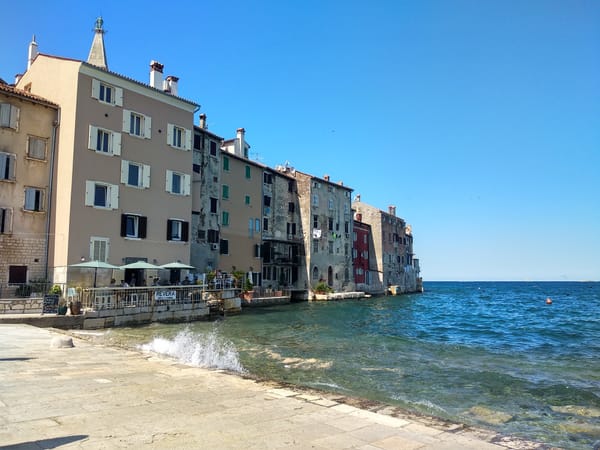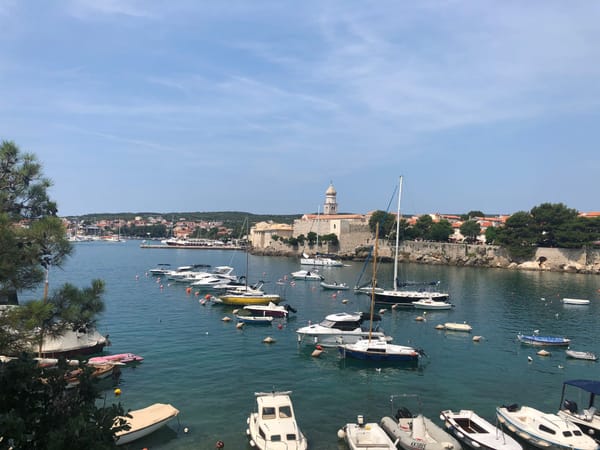Putting the Port into Porto
One of the more bizarre features of Porto are the humongous signs bearing British names which beam out across the river. "GRAHAMS" "TAYLORS" "SANDEMAN" "COCKBURN"

One of the more bizarre features of Porto are the humongous signs bearing British names which beam out across the river.
"GRAHAMS"
"TAYLORS"
"SANDEMAN"
"COCKBURN"
If you're British, you might recognize these brands as port producers, however, it wasn't until I arrived in Portugal that it occurred to me how weird it is that most port brands that are sold in UK supermarkets have British names. I would be extremely distrustful of French or Italian wine with a British name. Why is it normal that Portuguese wine does?

The answer is, we Brits were the first importers of Port. Due to conflicts with France, the supply of French wine coming across the English channel slowed to a trickle at the start of the eighteenth century. Britain looked further afield to get it's booze fix, and turned to the Douro wine region in Portugal, adding copious amounts of brandy to the wine to prevent it from spoiling on the journey back to the UK.
Not even from Porto
Ironically, Port isn't event from Porto. The wine is made in the Douro wine region, and then stored in cellars Vila Nova de Gaia, a city on the opposite side of the river to Porto. Apparently this gives Gaia the dubious honour of being the city with the most alcohol per square metre in the world.

The reason Gaia has all the port is, historically, taxes were lower outside of the city of Porto. The wine gets it's name from the fact it has always been exported from the port of Porto.
An adventurous drink
Port used to be transported from the vineyards in the Douro valley to Gaia by boats, known as rabelos. with the last commercial trips being made in the 1960s. Today the Douro river is wide and flat, so it sounds like a peaceful job, however that is because now there are no less than fifteen dams on the river. In the past it was treacherous and fast flowing, hence the boats which were used to transport the wine were small and shallow.

Tawny or Ruby? It's all about the barrels
This is my favourite Port fact. The difference between ruby and tawny port is to do with the barrels it is aged in. All port is aged for at least two years, but the tawny port is aged in much smaller oak barrels. Ruby port is aged in huge metal or wooden ones. The result is the tawny is exposed to the wood much more, giving it a brown tint and a more oaky flavour.
Red port is just the beginning
White port is a popular drink in Portugal, although it's not widely known or exported out of the country. The ones I sampled were sweeter than the ruby and tawny ports, with a honey flavour.
However, it doesn't stop there. In a bid to be more down with the kids, some of the more progressive Port houses are starting to produce rose port. I've tried a couple of rose ports, but I wasn't a huge fan of them. Port is already pretty sweet, so adding rose grapes into the mix was too much. However, at least in Porto, rose port is a popular cocktail ingredient. We've sampled a Caipiporto - cachaça and port, but port tonic cocktails are more common.
Britain doesn't even drink the most
Apparently France is the number one imPORTer these days! According to Nicolas, my expert on all things French, this is because it's popular drink to take for an apero, whereas we Brits save it for special occasions.

Vintage, Non-Vintage and Late Bottled Vintage
Let's start with vintage port. If, one year, a winery believes their grapes to be of exceptional quality, they will decide to make a vintage port. They collect the grapes by hand, press them by standing on them, and then pop it into a barrel for two years. After two years, they take a sample to the port wine governing body - the "Instituto dos Vinhos do Douro e Porto". If it passes a blind tasting, then it can be bottled, aged and sold as a vintage port.
Vintage port years come around about three times a decade. The best vintage port year ever was 2011, and rumour has it that 2017 is going to be another excellent vintage year, so if you're in Porto in 2019, be sure to check out the 2017 port.

In contrast, Late Bottled Vintages (or LBV for short), are ports which are made from a single grape, but aged for longer than two years in the barrel, usually for between four and six years. From what I understand, these grapes are above average, but aren't quite up to the same quality as "vintage" grapes. Is it is aged in the barrel rather than the bottle, it is generally a bit cheaper than vintage port.
Standard port - the stuff which is neither vintage nor LBV, is usually a blend of grapes from different years. This is because with these "normal" ports, the wineries try to keep the same flavour year after year.
The best way to sample Port in Porto?
We've tried sampling Port in several different ways in Porto.
We went to a tasting room, we did a cellar tour, we drank Port in random bars.
After all of that, hands down the most interesting and value for money experience was the Port tour we did with Porto Walkers. For €25 we went to three different port houses, including a rooftop bar, a port museum and a cellar and tried 7 ports, all without the sales pitch we had experienced when going into the tasting rooms alone. It was also great fun.




